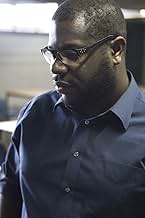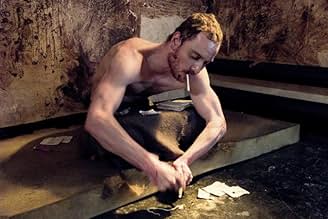Irish republican Bobby Sands leads the inmates of a Northern Irish prison in a hunger strike.Irish republican Bobby Sands leads the inmates of a Northern Irish prison in a hunger strike.Irish republican Bobby Sands leads the inmates of a Northern Irish prison in a hunger strike.
- Won 1 BAFTA Award
- 49 wins & 39 nominations total
- Director
- Writers
- All cast & crew
- Production, box office & more at IMDbPro
Storyline
Did you know
- TriviaHunger is known for its unbroken 17 minute 10 second continuous shot, in which Catholic priest Father Dominic Moran tries to talk Bobby Sands out of the Hunger Strike he and his fellow 75 IRA members plan to start. The camera remains in the same position throughout the scene. To prepare, Liam Cunningham moved into Michael Fassbender's apartment, and they rehearsed the scene 12-15 times per day. On the first day of filming, the actors got it perfect after 4 takes.
- GoofsRaymond Lohan's Ford Granada is a Mk2 Facelift, which was released in winter 1981 and would've appeared on Irish roads in 1982.
- Quotes
Bobby Sands: I have my belief, and in all its simplicity that is the most powerful thing.
- ConnectionsFeatured in Front Row Late: Michael Fassbender/Kate Winslet (2017)
- SoundtracksIndustry
Performed by Maya Beiser
Composed by Michael Gordon
Published by Red Poppy in association with G. Schirmir, Inc.
Featured review
The movie is a timely piece of film-making in this era of Abu Ghraib and Guantanamo Bay. I have to admit my prejudice for the film because of my past as one of the prisoners depicted in the film. Long Kesh or the Maze as the British infamously renamed it was the Abu Ghraib of its day. One stark difference though: unlike Abu Ghraib, no one has ever been charged with the horror and relentless torture inflicted upon naked, defenceless prisoners in Long Kesh. The film is uncompromising in its examination of the events leading up to and beyond the Hunger Strike. Michael Fassbender is frighteningly real. But I will leave it up to the words of Peter Bradshaw in the Guardian to sum it up: 'Hunger is raw, powerful film-making and an urgent reminder of this uniquely ugly, tragic and dysfunctional period in British and Irish history
'
Details
- Release date
- Countries of origin
- Official site
- Languages
- Also known as
- Tù Khổ Sai
- Filming locations
- Production companies
- See more company credits at IMDbPro
Box office
- Budget
- £1,500,000 (estimated)
- Gross US & Canada
- $154,084
- Opening weekend US & Canada
- $1,980
- Dec 7, 2008
- Gross worldwide
- $3,185,113
- Runtime1 hour 36 minutes
- Color
- Sound mix
- Aspect ratio
- 2.35 : 1
Contribute to this page
Suggest an edit or add missing content



































